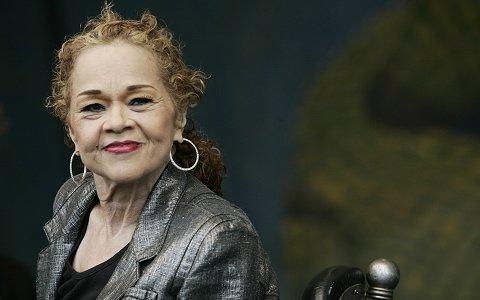Etta James – A Complete Biography
Introduction
Etta James (born Jamesetta Hawkins) stands as one of American music’s most expressive voices—a singer who could move effortlessly from raw R&B and blues to elegant torch ballads, leaving behind a body of recordings that remain touchstones for vocal interpretation. Over a six-decade career she scored landmark hits, from “The Wallflower (Dance With Me, Henry)” to “At Last,” “Tell Mama,” and “I’d Rather Go Blind,” and earned induction into the Rock & Roll Hall of Fame and multiple GRAMMY Awards, including a Lifetime Achievement Award.

Childhood
James was born in Los Angeles on January 25, 1938, to 14-year-old Dorothy Hawkins; she never knew her father and was raised largely by foster caregivers. As a child she sang in the choir at St. Paul Baptist Church in South-Central Los Angeles, where noted choir director James Earle Hines gave her early formal training and featured her as a soloist. These formative years—split between instability at home and discipline in church—shaped the vocal power and emotional directness that would define her style.
Youth
At age 12 James moved with her mother to San Francisco, where she formed a girl group called the Creolettes. Discovered as a teenager by bandleader Johnny Otis, the group was renamed the Peaches, and James flipped her given name to create her stage name, “Etta James.” Her 1954 response record “Roll With Me, Henry” was retitled “The Wallflower (Dance With Me, Henry)” for airplay; it became an R&B hit and announced a major new voice.
In 1960 she signed with Chess Records (Argo/Chess) and quickly emerged as the label’s foremost female star, notching hits such as “All I Could Do Was Cry,” “My Dearest Darling,” “Trust in Me,” and the enduring ballad “At Last,” whose lush, string-led arrangement showcased her command of pop as well as blues phrasing. Her debut LP At Last! and subsequent early-’60s singles established her as a rare crossover stylist.
Adulthood
James’s 1960s peak blended Chicago soul, Southern grit, and blues. At Rick Hall’s Fame Studios in Muscle Shoals she cut searing sides like “Tell Mama” and “I’d Rather Go Blind,” the latter becoming one of her most-covered performances. Yet the decade also brought personal turmoil, including a heroin addiction and legal troubles that complicated her career.
Leaving Chess in the mid-1970s, she continued to tour, opened for the Rolling Stones, and weathered lean commercial years before a late-1980s resurgence with Seven Year Itch. The 1990s and 2000s saw a celebrated renaissance: Mystery Lady: Songs of Billie Holiday (1994) earned her first GRAMMY, followed by GRAMMY wins for Let’s Roll (2003) and Blues to the Bone (2004). In 1993 she entered the Rock & Roll Hall of Fame, confirming her standing among the essential voices of American music.
Major compositions (signature recordings)
While best known as an interpretive singer, James made a series of definitive recordings that have become part of the American songbook:
- “At Last” (1961) — Her signature ballad and a perennial wedding standard, cementing her crossover appeal and mastery of sustained, operatic phrasing.
- “Tell Mama” (1967) — A powerhouse Southern-soul performance cut at Fame Studios in Alabama, showcasing her bite and stamina.
- “I’d Rather Go Blind” (1967) — A heart-rending slow burner recorded in Muscle Shoals that became one of her most influential sides.
- “The Wallflower (Dance With Me, Henry)” (1955) — Her breakthrough R&B smash, adapted for airplay from the risqué “Roll With Me, Henry.”
- “All I Could Do Was Cry,” “Trust in Me,” “Something’s Got a Hold on Me,” and “A Sunday Kind of Love” — Early-’60s Chess/Argo hits that displayed her range from gospel-charged drive to torch-song intimacy.
Death
After years of health challenges, including leukemia as well as dementia and kidney problems, James died on January 20, 2012, at Parkview Community Hospital in Riverside, California. Memorial tributes and a funeral the following week featured musical honors from peers and admirers, underscoring the breadth of her influence across generations.
Conclusion
Etta James’s gift was the rare ability to deliver truth—whether roaring through a Muscle Shoals soul groove or suspending a single vowel in a midnight ballad. Her career bridged doo-wop, blues, soul, jazz, and pop; her recordings remain a masterclass in phrasing, timbre, and emotional authenticity. Honors from the Recording Academy and the Rock & Roll Hall of Fame formalized what listeners knew instinctively: she was, and remains, one of the great American voices.

Comments are closed